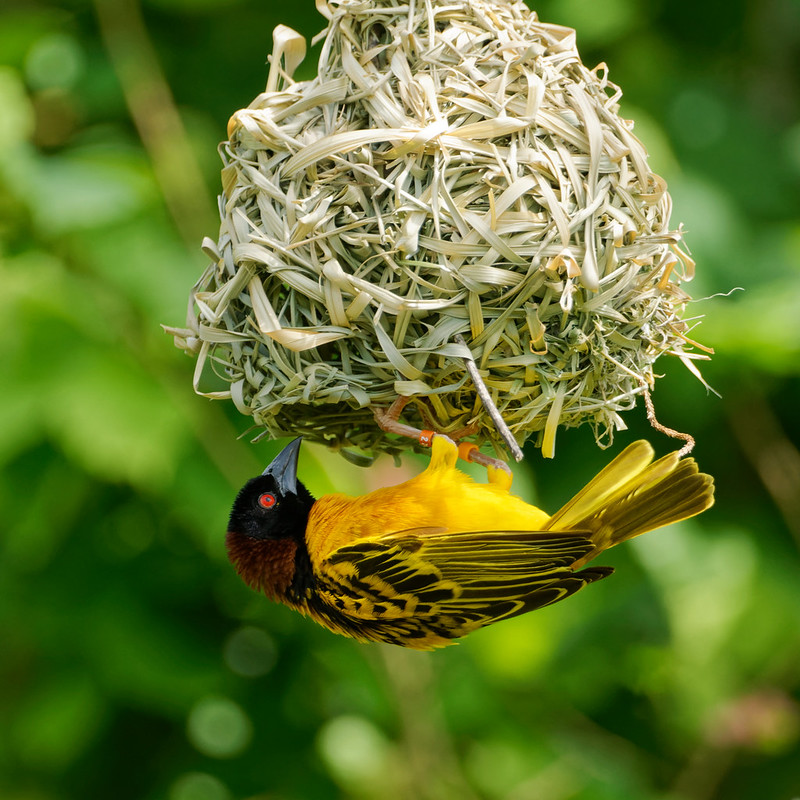Some soar from country to country, even continent to continent, escaping freezing temperatures. Others are residents of one particular habitat and remain there all year round.

To achieve this some birds have developed various survival tactics passed on from generation to generation, such as how and where to get food, or how to build a nest. One such bird is the Village Weaver, colored a bright shade of yellow, these birds possess the skills that would make many a human craftsman jealous.

Village Weavers can be found in Mauritania, Ethiopia, and South Africa. These small, gregarious, highly skilled birds like partially open-range areas, such as woodlands, forests, or areas near rivers.
They can also be found in many towns, villages, and hotels, chatting away in loud bird song.
Having the ability to be rather loud, if not obnoxious birds, the weaving skill these birds possess cannot be ignored, and in fact, is really quite amazing. Male birds take on the role of nest builder and only use each nest they make once. Males make up to 3-5 nests, each nest taking anywhere from 9-14 hours to complete.

The nest is made up of reed strips, grass, leaves, and or palm blades, weaved into an intricate kidney-like shape, with an entrance near the bottom of the new, would be home. Village Weavers attach their woven grass nests to branches on free-standing trees.

It’s no coincidence why these yellow birds coined the name ‘Village Weavers’. Their complex woven designed nest will leave your head at a slight turn. How do they braid all of those grass pieces with their beaks? It’s definitely amazing to watch them in action weaving strand by strand.

The Village Weaver mates from early September all the way through October and also from January into February. The male Village Weaver breeds with up to 5 females each breeding season. What exactly draws female Village Weavers to the males? well, it has everything to do with their epic architecture abilities.
